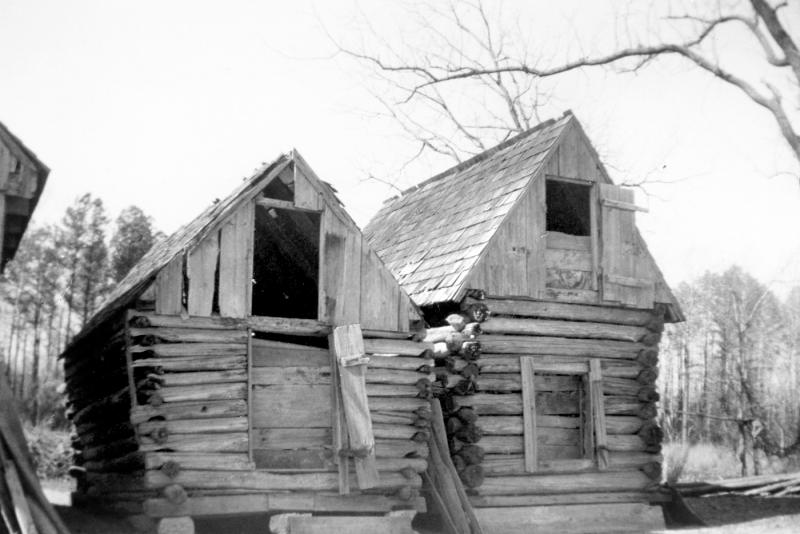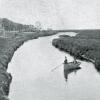Notched-log corn cribs from the early 1900s
This 1955 photograph from the Ernest Collection of Country Store Photographs shows a pair of corn cribs located on the edge of the Great Cypress Swamp near Gumboro. They were probably constructed in the late 1800s or early 1900s to provide protected storage of the autumn’s corn harvest.
Here’s some information about corn cribs gleaned from Wikipedia: “After the harvest and while still on the cob, corn is placed in the crib either with or without the husk. The typical corn crib has slats in its walls to allow air to circulate through the corn, both allowing it to dry initially and helping it stay dry. The slats expose the corn to pests, so corn cribs are elevated beyond the reach of rodents. Corn cribs were first used by Native Americans and were quickly adopted by European settlers. Struggling European settlers often raided corn cribs for food. As a result, at least some native groups abandoned the corn crib and buried food in caches.”



















































